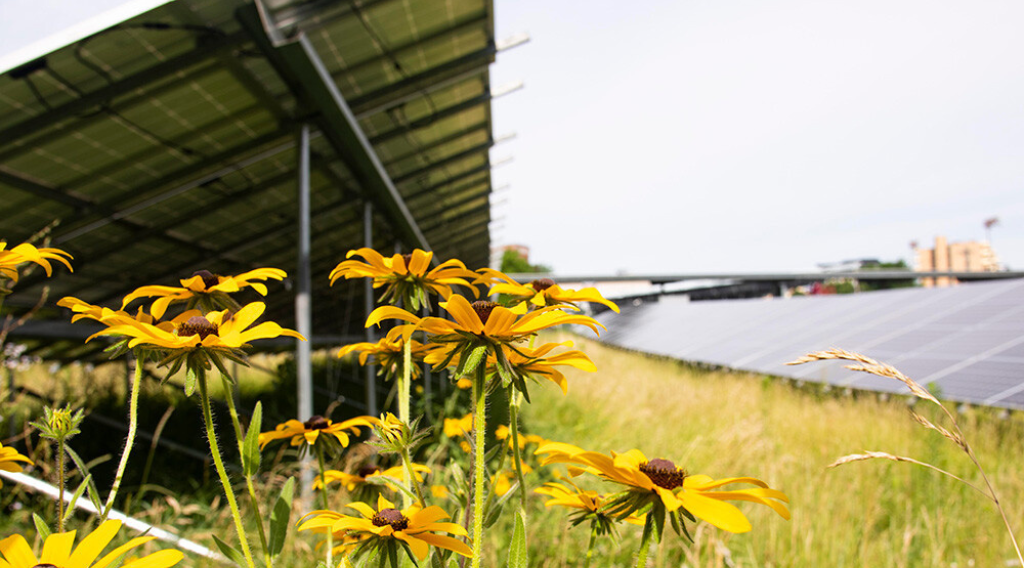
Note: This blog is the first installment of a two-part series on carbon disclosure.
Carbon disclosure is the practice of reporting and managing emissions through credible reporting platforms, consistent with global standards and protocols. Cities around the globe have committed to reducing their impact on climate change and are using these entities to monitor and demonstrate their progress. Established disclosure platforms are available to cities to measure their impact while providing insights into their energy use that can be used to identify opportunities for more effective practices and policies.
Disclosing emissions allows entities to set targets for climate action and track improvement. Visualization of this information can also help to inform policy-makers, and spur community action. Using globally recognized platforms allows for the aggregation of GHG emissions data across cities, regions, and countries; creating the opportunity to capture collective impact of actions worldwide.
The two major disclosure platforms for cities are CDP and the carbonn® Climate Registry (cCR). CDP is a nonprofit that runs a global disclosure system for investors, companies, cities, states, and regions; more than 600 public entities report to CDP. cCR is a global reporting platform for cities, towns, and regions; more than 1,000 entities report to cCR representing nine percent of the world’s population. Since the Paris Agreement in 2015, sub-national and non-governmental organizations have increasingly demonstrated support for the Paris Agreement by making climate commitments. The number of cities, states, and regions reporting to CDP has more than doubled from 2014 participation (Figure 1).

Figure 1: Number of cities, states, and regions reporting to CDP by year. Source: CDP, https://www.cdp.net/en/cities.
Disclosing carbon emissions is an important step toward meeting the climate goals of the Paris Agreement and ultimately avoiding a 2 degree rise in global temperature. Carbon disclosure requires cities to complete community-wide greenhouse gas emissions inventories. Much of GPI’s sustainable communities work has been in Minnesota where many of the pieces are in place to support cities, at scale, to track and disclose their carbon emissions. For example, Minnesota already has statewide programs like the Regional Indicators Initiative and GreenStep Cities, where much of the data needed for greenhouse gas inventories is already available.
Perhaps the most important benefit of disclosing carbon emissions is the power of collective action. When GHG emissions are broken down to the local level, it may create a sense of powerlessness relative to the magnitude of the problem. Minnesota, for example, emits one quarter of one percent of global emissions, making it difficult to imagine the impact of emissions reductions from just one state. Part of what makes this such a challenging problem is that, for most of the world, local action feels insufficient. However, distributed efforts to combat climate change, added together, will result in concentrated gains. As we noted in a previous blog, analysis done by ARUP and C40 cities shows that U.S. cities with over 50,000 people could collectively achieve about 1/3 of the US commitment to the Paris Climate Accord and six percent of the cumulative emissions savings needed to reach global climate targets. Disclosure platforms, like CDP and cCR, provide a space where states, regions, cities, and companies can connect and realize an impact greater than their own.
It begins with measuring emissions.
Greenhouse Gas Emissions Inventory
Carbon disclosure involves reporting community-wide greenhouse gas emissions. To do this, cities must complete a GHG inventory that complies with the global standard for cities called Global Protocol for Community-Scale Greenhouse Gas Emissions Inventories (GPC). The GHG Protocolprovides guidance and training for cities to complete a GHG inventory. Using a consistent method of accounting allows for aggregating cities to regional and national levels.
GHG inventories generally capture two types of emissions referred to as Scope 1 and Scope 2. Scope 1 emissions are those that occur within the boundaries of a community and include things like travel, cooking and heating, and industrial processes. Scope 2 emissions occur outside a community, but result from actions that take place within a community, such as the use of electricity, or methane released at a landfill from organic waste.
For GPC, Scope 1 and 2 emissions are classified into five main sectors:

Completing a greenhouse gas inventory provides a community a picture of how energy is used within its boundaries. With this information, cities can begin to set targets to reduce emissions relative to either a baseline year or a business-as-usual forecast. Regardless of how a city chooses to set its target, it will need to maintain the inventory over time. Cities should establish a data management plan for their inventory processes. Once an inventory is complete and targets are set, cities can begin to think about policies and implementation strategies that align with GHG reduction targets, focusing on the biggest opportunities for action to accelerate the reduction of carbon emissions. GHG inventories can be reported to a carbon disclosure platform, which can help cities manage data, report actions, and track progress.
CDP and cCR are internationally recognized reporting platforms for cities and other government levels. cCR is the designated repository for the Compact of Mayors, a global coalition that has committed to reduce local GHG emissions, enhance resilience, and publicly track progress. Data that is reported to CDP, however, will also be uploaded to cCR for aggregation.
In Minnesota, there are currently four cities reporting to cCR and seven reporting to CDP.

Figure 2: City of Minneapolis cCR profile
Increasingly, cities and other local, state, and regional governments are joining global efforts to commit to climate action, some of which require disclosure. With so many pledges, commitments, and coalitions, it can be confusing to keep track what is required for participation. Some are merely symbolic, while others require more robust action. With the expansion of established, internationally recognized reporting platforms, there are more resources available to cities to track progress toward meeting their goals.
Part II of this post will discuss the various levels of commitment cities can make and why a city may want to join.


